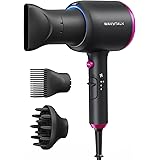Understanding Hair Loss: Causes and Types
Hair loss can be a distressing experience for many individuals, and understanding its causes and types is essential in seeking effective treatments. One of the most significant factors influencing hair loss is genetic predisposition, often manifesting as androgenetic alopecia. This hereditary condition affects both men and women, leading to gradual thinning of hair, typically beginning at the temples or crown for men, and a widening part or overall thinning for women.
Hormonal changes also play a pivotal role in hair loss. Conditions such as thyroid disorders, pregnancy, and menopause can significantly impact hair health. Hormones like dihydrotestosterone (DHT) contribute to miniaturization of hair follicles in genetically predisposed individuals. This often results in a shorter hair growth cycle and ultimately leads to hair thinning or loss.
Moreover, various medical conditions can precipitate hair loss. Autoimmune disorders, such as alopecia areata, result in sudden hair loss in round patches and occur when the immune system mistakenly attacks the hair follicles. Telogen effluvium, another form of hair loss, primarily occurs following significant stress, illness, or surgical procedures, where a greater number of hairs prematurely enter the shedding phase. Nutritional deficiencies, particularly a lack of essential vitamins and minerals, can further exacerbate hair thinning.
Lifestyle choices, including poor diet, smoking, and excessive alcohol consumption, can also contribute to hair loss. A balanced diet rich in proteins, vitamins, and minerals is crucial for maintaining healthy hair. Additionally, the stress experienced in daily life can also trigger hair shedding, necessitating effective stress management techniques.
In essence, understanding the various causes and types of hair loss is crucial for identifying the right approach to treatment, ultimately helping individuals reclaim their hair health.
Recognizing the Symptoms of Thinning Hair
Thinning hair is a common condition that can lead to significant changes in one’s appearance and self-esteem. Recognizing the early symptoms is crucial for individuals to take proactive measures before extensive hair loss occurs. Several indicators can signal the onset of thinning hair.
One of the most noticeable signs is increased hair breakage. If you find more strands of hair on your brush or in the shower drain than usual, it may indicate that your hair is becoming weaker and more prone to breakage. Hair that breaks easily can contribute to an overall perception of thinning, as the remaining strands appear less dense.
The widening of part lines is another significant indicator of hair thinning. If you observe that your part is becoming more pronounced or that your hair looks flatter and less voluminous, it may be time to assess the health of your hair. This change can occur due to a reduction in hair density, which is often linked to factors such as genetics, stress, or nutritional deficiencies.
Visible scalp is yet another emission of hair thinning. As follicles shrink and hair strands become finer, the scalp may become more apparent, especially under direct lighting. This symptom is a clear signal that immediate attention may be needed to address the underlying causes of thinning hair.
By being mindful of these symptoms—hair breakage, widening part lines, and visible scalp—individuals can act promptly. Addressing these signs early can significantly improve the effectiveness of treatments and solutions for thinning hair, ultimately enhancing the chances of maintaining healthier hair. Understanding these indicators is an essential step in managing hair loss and seeking appropriate interventions.
Natural Remedies and Lifestyle Changes
Hair loss is a common concern for many individuals, prompting the exploration of natural remedies and lifestyle modifications that can promote hair health. One effective approach involves the use of essential oils, which have been recognized for their potential to stimulate hair growth and enhance overall scalp health. For instance, rosemary oil is renowned for its ability to increase blood circulation to the scalp, while peppermint oil provides a cooling effect that may invigorate hair follicles. Incorporating these oils into a regular scalp massage routine can be a beneficial practice in preventing further loss of hair.
A balanced diet plays a crucial role in maintaining healthy hair. Consuming a variety of foods that are rich in essential vitamins and minerals is paramount for nourishing the hair from within. Vitamins such as Biotin, Vitamin D, and minerals like zinc and iron are vital in supporting hair vitality. Foods that are particularly beneficial include leafy greens, nuts, egg yolks, and fish. Ensuring adequate protein intake is also necessary, as hair is primarily composed of a protein called keratin. Thus, incorporating lean meats, legumes, and dairy into one’s diet can help in promoting healthy hair growth.
Furthermore, managing stress effectively is an often-overlooked factor in maintaining hair health. Chronic stress can lead to conditions like telogen effluvium, where excessive shedding occurs. Therefore, incorporating stress-reducing techniques such as yoga, meditation, or regular physical exercise can significantly improve both mental well-being and hair resilience. Additionally, maintaining hydration is crucial; drinking sufficient water helps in keeping the scalp and hair well-hydrated, ultimately contributing to reduced hair thinning.
In conclusion, combining these natural remedies and lifestyle changes can provide a well-rounded approach to combating hair loss and improving hair health. Through mindful practices and dietary considerations, individuals can take proactive steps towards achieving healthier, fuller hair.
Over-the-Counter Treatments and Products
Over-the-counter hair loss treatments provide accessible options for individuals experiencing thinning hair. Among the most well-known of these is minoxidil, commonly marketed under brand names such as Rogaine. Minoxidil is a topical treatment that, when applied directly to the scalp, works by increasing blood flow to hair follicles, potentially revitalizing hair growth in individuals suffering from androgenetic alopecia, commonly referred to as male or female pattern baldness. Studies have demonstrated that regular use of minoxidil can lead to an increase in hair density and promote regrowth in some users.
In addition to minoxidil, various formulations containing other active ingredients are available over the counter. For example, some hair loss products incorporate saw palmetto, a natural extract believed to block the formation of dihydrotestosterone (DHT), a hormone that contributes to hair follicle shrinkage. Other products may include ketoconazole, an anti-fungal agent that has also been shown to have some efficacy in promoting hair growth due to its anti-inflammatory properties. Such combination therapies aim to target multiple pathways involved in hair loss.
Proper application of these treatments is critical for achieving optimal results. Minoxidil should typically be applied twice daily, and users are advised to follow the product’s instructions meticulously. Ensuring that the scalp is clean and dry before application enhances absorption, while consistent use is necessary to maintain benefits and prevent further hair thinning. Users can expect to see hair regrowth results after several months of continual use, but it is essential to note that not all individuals will respond to over-the-counter treatments in the same way.
Ultimately, while over-the-counter options like minoxidil and other topical treatments present viable solutions for addressing hair loss, users should consider consulting healthcare professionals for personalized advice and to explore all available treatment options.
Prescription Medications for Hair Loss
Hair loss and thinning hair can significantly affect an individual’s confidence and self-esteem. For individuals seeking effective treatments, prescription medications offer viable options. Two of the most common medications prescribed for hair loss are finasteride (known commercially as Propecia) and hormonal therapy. Each of these treatments operates through distinct mechanisms to promote hair regrowth and slow down the hair loss process.
Finasteride is an oral medication that primarily works by inhibiting the enzyme 5-alpha-reductase. This enzyme is responsible for converting testosterone into dihydrotestosterone (DHT), a hormone that contributes to hair loss in genetically predisposed individuals. By reducing DHT levels, finasteride can lead to increased hair density and a decrease in further thinning. It is important for patients to be aware that the effectiveness of finasteride typically requires several months of consistent use, with an average time frame of three to six months before noticeable results appear.
Hormonal therapy may involve medications that rebalance hormone levels in individuals experiencing hair loss due to hormonal fluctuations, such as women during menopause. These medications can target issues such as elevated androgen levels, which can lead to adolescent and adult pattern hair loss. However, hormonal therapy may come with a range of potential side effects, including weight gain, mood changes, and increased risks for other health conditions. Thus, the decision to pursue hormonal therapy must be carefully considered.
It is crucial for anyone contemplating prescription treatments for hair loss to consult with a qualified healthcare professional. This step ensures an accurate diagnosis and the identification of the most suitable treatment option. While prescription medications can offer effective solutions for hair loss, the importance of a professional evaluation cannot be overstated, as it helps to mitigate risks and monitor progress effectively.
Hair Care Routines for Thinning Hair
Establishing a thoughtful hair care routine is essential for individuals experiencing hair thinning. The right products and techniques can significantly improve the appearance and health of thinning hair. A good starting point is choosing appropriate shampoos and conditioners specifically formulated for fine or thinning hair. Look for products that prioritize volumizing effects and contain ingredients like biotin, keratin, and natural botanical extracts, as these can contribute to strengthening and thickening hair strands.
Gentle hair washing techniques can also make a substantial difference. It is advisable to wash hair no more than two to three times a week to avoid stripping the scalp of natural oils. When shampooing, use lukewarm water instead of hot, as excessive heat can damage thinning strands and weaken hair follicles. Applying shampoo only to the scalp and allowing the lather to cleanse the lengths during rinsing minimizes direct friction on fragile hair, reducing breakage. When it comes to conditioners, focus on lightweight formulas that do not weigh hair down; applying conditioner to the mid-lengths and ends ensures moisture without adding excess heaviness.
Styling techniques play a significant role in enhancing the visual fullness of thinning hair. Using a volumizing mousse or spray can help create the illusion of thicker hair. Additionally, consider incorporating styles that add texture, such as loose waves or curls, which can provide body to limp strands. Avoid tight hairstyles that pull on the roots, as this can exacerbate hair loss. Instead, opt for loose ponytails or buns to maintain a stylish look while minimizing stress on hair follicles. Regular trims are also beneficial as they help eliminate split ends, leading to healthier-looking hair overall.
The Role of Hair Transplants and Surgical Solutions
Hair loss can be a distressing experience that affects both men and women, leading many to explore various treatment options, including surgical solutions. Among the most common surgical techniques are Follicular Unit Extraction (FUE) and Follicular Unit Transplantation (FUT). These methods offer a promising avenue for restoring hair and restoring self-esteem for individuals grappling with thinning hair.
Follicular Unit Extraction is a minimally invasive procedure that involves extracting individual hair follicles from a donor area, typically the back of the scalp, and transplanting them into balding or thinning areas. This technique is favored for its ability to leave minimal scarring and for the natural appearance of the results. Patients can often return to normal activities relatively quickly, making FUE an appealing option for many.
On the other hand, Follicular Unit Transplantation involves removing a strip of scalp from the donor area, from which follicular units are harvested. While this method may result in a linear scar, it allows for the transplantation of a larger number of follicles at once, which can lead to denser hair coverage. FUT may be more suitable for individuals requiring extensive restoration or those with advanced hair loss.
Both FUE and FUT come with potential risks and side effects, including infection, scarring, and the possibility of graft failure. It is critical for candidates to consult with a qualified surgeon to discuss their medical history and determine the most appropriate technique for their specific needs. While costs can vary significantly based on factors such as the number of grafts required and the geographical location of the clinic, patients should weigh the financial investment against the potential benefits of restored hair.
In conclusion, hair transplant techniques like FUE and FUT provide effective surgical solutions for those experiencing hair loss. By understanding the benefits, risks, and costs associated with these procedures, individuals can make informed decisions regarding their treatment options.
Emerging Treatments and Technologies for Hair Loss
The landscape of hair loss treatments is undergoing significant transformation, driven by ongoing research and technological advancements. Among the most promising innovations are laser therapy, platelet-rich plasma (PRP) therapy, and stem cell therapy, each offering unique mechanisms to combat hair loss effectively.
Laser therapy utilizes low-level lasers to stimulate hair follicles, increasing blood flow and promoting hair growth. This non-invasive technique has gained traction due to its accessibility and minimal side effects. The underlying principle is based on photobiomodulation, where light energy is absorbed by cellular components, enhancing cellular metabolism and, ultimately, encouraging hair regeneration. Numerous clinical studies have reported positive outcomes, fostering confidence in laser therapy as a viable option for individuals struggling with thinning hair.
Platelet-rich plasma (PRP) therapy is another innovative approach that involves extracting a patient’s blood, processing it to concentrate the platelets, and injecting it into the scalp. The growth factors present in PRP are believed to rejuvenate hair follicles, thereby promoting hair growth and improving overall hair health. Recent research has spotlighted the effectiveness of PRP therapy, showing significant improvement in hair density and thickness for patients undergoing regular treatments.
Lastly, stem cell therapy is at the forefront of hair restoration technology. This groundbreaking approach harnesses the regenerative capabilities of stem cells, which can differentiate into various cell types, including those required for hair follicle production. While still largely in experimental stages, preliminary studies have shown promising results, indicating that stem cell therapy could pave the way for innovative, long-term hair loss solutions.
As these cutting-edge technologies continue to evolve, they hold the potential to considerably enhance treatment efficacy for hair loss, offering hope to millions affected by thinning hair. Ongoing research will likely unveil additional methodologies that can further improve outcomes in hair restoration.
Consulting a Professional: When to Seek Help
Experiencing hair loss or thinning hair can be distressing, and determining the right course of action often requires professional insight. It is essential to recognize when the situation warrants consulting a healthcare professional or dermatologist. Typically, individuals should seek help when they notice significant changes in hair density, such as patches of baldness, excessive shedding during washing or styling, or if hair seems to be thinning at a rapid rate. Additionally, if hair loss is accompanied by symptoms such as itching, redness, or discomfort on the scalp, it is advisable to consult a specialist promptly.
During an examination, a dermatologist will assess the scalp and hair, often performing a thorough evaluation that may include a medical history review, physical examination, and, in some cases, blood tests or scalp biopsies. These assessments are imperative, as they can help identify underlying conditions such as hormonal imbalances, nutritional deficiencies, or autoimmune disorders that may contribute to hair loss. Understanding the root cause is vital for effective treatment options.
After diagnosing the underlying cause, a healthcare professional can propose tailored treatments and solutions. Options may range from topical treatments like minoxidil, oral medications, hormone therapy, to advanced procedures like platelet-rich plasma (PRP) therapy and hair transplants. It is crucial to adhere to the prescribed treatment plan and regularly monitor progress with your healthcare provider.
Ultimately, seeking professional advice not only offers the potential for effective solutions but also alleviates concerns by providing clarity about the condition. Taking proactive steps can empower individuals to manage hair loss issues effectively, ensuring they receive appropriate and timely interventions. By recognizing the right moments to consult a professional, individuals can take control of their hair health and pursue effective treatments suited to their needs.






